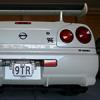Low ignition timing at idle 25DET NEO
Announcements
-
Similar Content
-
Latest Posts
-
I hope that is not something that bad. From what i remember he said that only first gear is "hard" to get in and that he has couple of ideas what to try next but idk 😕 hope it is not gearbox out. I will let you know.
-
If it's not the hydraulics, it is probably gearbox back out. Usually as per @Duncan's post, or otherwise associated with not getting the throwout fork positioned correctly. All the way up to catastrophically bolting shit back together without it being aligned properly and wrecking the clutch/input shaft/flywheel/something else.
-
@GTSBoy iam not a mechanic so what could typically gone wrong? It can help my mechanic...maybe he just forgot something or something like that that could help. Yeah i thought. I took a LONG time to search for the right one. Yes i read about all of that and i give him a call about that. I look at those slave/master cylinders and they are not that expensive so i will be buying them anyway just to be sure. @DuncanYou think it can be short? I double checked if that was a right one(it came with the clutch kit) Ok i will give him a call. Hope it is some sort of "little error" and not some "yeah the gearbox needs to go out" one
-
Temporary. Sorry about the inconvenience while we sort some issues.
-
No idea. I haven't looked at it since sometime last year.
-




Recommended Posts
Create an account or sign in to comment
You need to be a member in order to leave a comment
Create an account
Sign up for a new account in our community. It's easy!
Register a new accountSign in
Already have an account? Sign in here.
Sign In Now